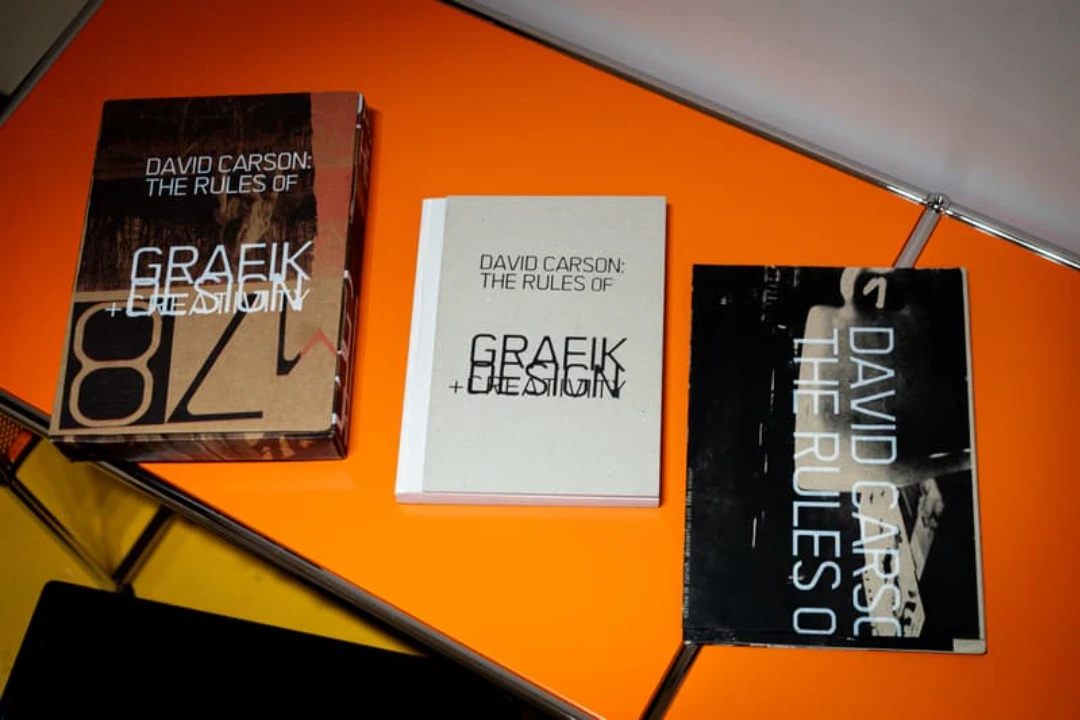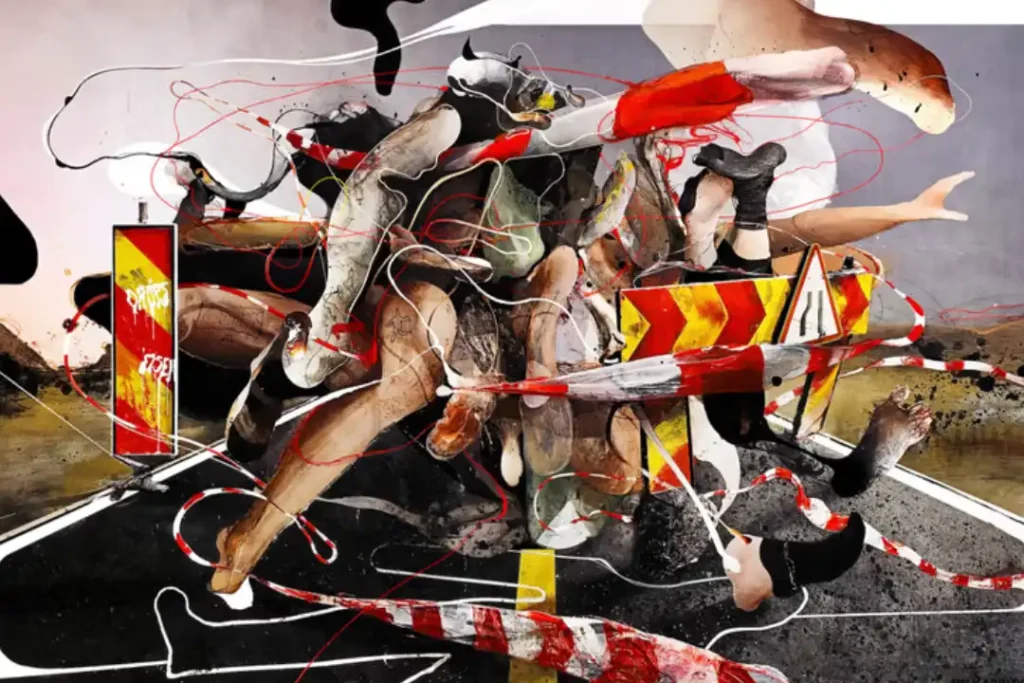David Carson, a name synonymous with graphic design innovation, is once again at the forefront of design conversations with the unveiling of his long-lost archive in the newly released book, The Rules of Grafik Design + Creativity. Known for his pioneering work that blends creativity with a distinct rejection of traditional design norms, Carson’s archive offers valuable insights into the creative process and visual experimentation that have made him a legendary figure in the world of design.
The book brings forth previously unseen works, sketches, and thought processes that shaped David Carson design as we know it today. For those familiar with Carson’s work in the 1990s, especially during his groundbreaking tenure at Ray Gun magazine, this collection offers an exciting glimpse into his creative process insights, showcasing the intuitive and rebellious approaches he has always been known for.
A Dive into Carson’s Creative Process
Carson’s design philosophy was never bound by traditional rules. His approach, often described as intuitive design, allowed him to create work that felt raw, emotional, and expressive, pushing the boundaries of how design was perceived. The archive featured in The Rules of Grafik Design + Creativity delves into the design techniques and strategies that Carson used to develop some of the most iconic works in the industry.
Whether it’s his use of unconventional layouts, fragmented typography, or abstract visuals, Carson’s process emphasized artistic expression over rigid adherence to established design principles. His refusal to follow conventional wisdom in design helped him create visuals that were bold and unique, resonating deeply with the cultural movements of the time.
The Legacy of David Carson’s Design Philosophy
Carson’s influence on the world of design goes beyond his visual work. His design thinking approach was one that allowed room for creative exploration, encouraging designers to embrace risk and ambiguity rather than strict formulas. This philosophy is clearly reflected in The Rules of Grafik Design + Creativity, where readers can follow Carson’s journey from rough conceptual sketches to polished final pieces, understanding how he arrived at his revolutionary visual solutions.
For Carson, design was a method of visual communication—a way to convey emotions, ideas, and cultural critiques without being limited by the traditional rules of graphic design. His ability to innovate with type and image arrangement was what set him apart and inspired an entire generation of designers to think differently about their work. The lost archive presents an opportunity for today’s designers to revisit these moments of innovation and apply these timeless creative strategies to modern projects.
Exploring Intuitive and Non-Linear Design Methods
A key part of Carson’s success has always been his use of intuitive design methods, which is well-documented throughout the pages of The Rules of Grafik Design + Creativity. Instead of meticulously planning out his designs, Carson allowed his instincts to guide him. This non-linear approach resulted in layouts and compositions that broke new ground in terms of creativity and emotional resonance.
Carson’s work often feels like a reflection of the chaotic yet structured nature of modern life. By disregarding formal grid systems and hierarchical structures, his designs resonate on an emotional level, and the lost archive reveals how he accomplished this seemingly effortless blend of chaos and order.
Influence on Modern Graphic Design and Visual Art
The Rules of Grafik Design + Creativity serves not only as a historical artifact but also as a source of inspiration for contemporary designers looking to break free from convention. Carson’s designs are a testament to the power of creative freedom and the importance of artistic risk-taking in pushing the boundaries of graphic design.
His approach to design innovation and creative practice has made a lasting impact on how visual art and graphic design are approached today. By revisiting his design process, modern creators can learn valuable lessons about balancing instinct with structure and how to communicate visually in ways that provoke thought and evoke emotion.
The Role of Graphic Design in Shaping Cultural Movements
One of the most profound insights from Carson’s archive is how graphic design can influence and reflect cultural movements. Carson’s work often mirrored the rebellious spirit of the 1990s, particularly in youth culture, music, and media. His contributions at Ray Gun were not just about magazine layouts—they were about challenging societal norms and experimenting with how visual design could challenge perceptions.
In The Rules of Grafik Design + Creativity, Carson’s archive highlights the ability of design to transcend simple aesthetics and become a driving force for cultural commentary and expression. This book is not just for designers; it is for anyone interested in the intersections of creativity, culture, and visual arts.
Conclusion:
The Rules of Grafik Design + Creativity offers a rare opportunity to explore the design techniques and creative exploration that have made David Carson a household name in the design world. From his rebellious approach to typography to his innovative use of layouts, Carson’s archive is a must-see for anyone passionate about design history and visual communication.
With this newfound access to his lost archive, designers today can glean valuable insights into creative strategies and techniques that continue to influence modern design. David Carson design is not just about breaking the rules—it’s about understanding why those rules exist and knowing when to bend them to create something truly groundbreaking.














